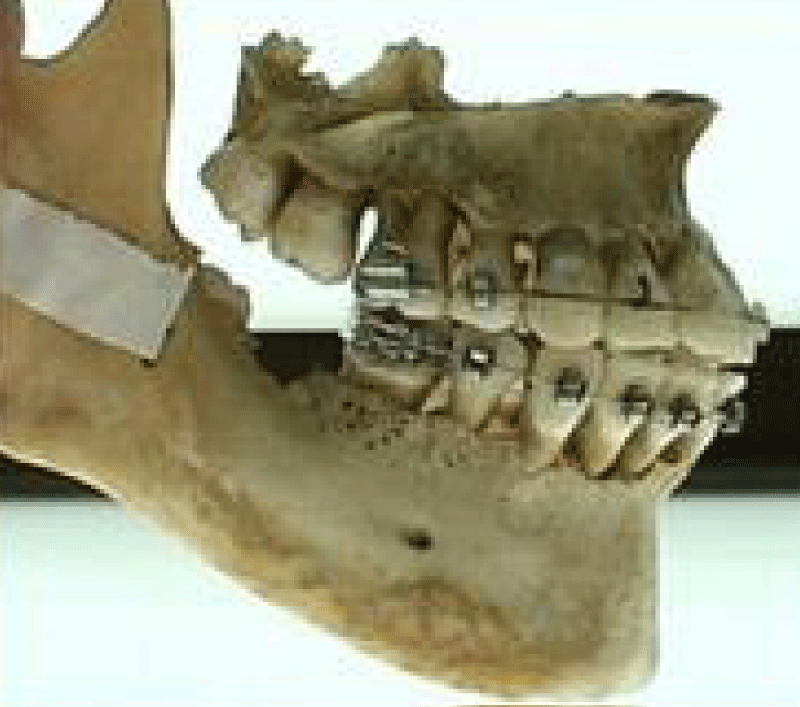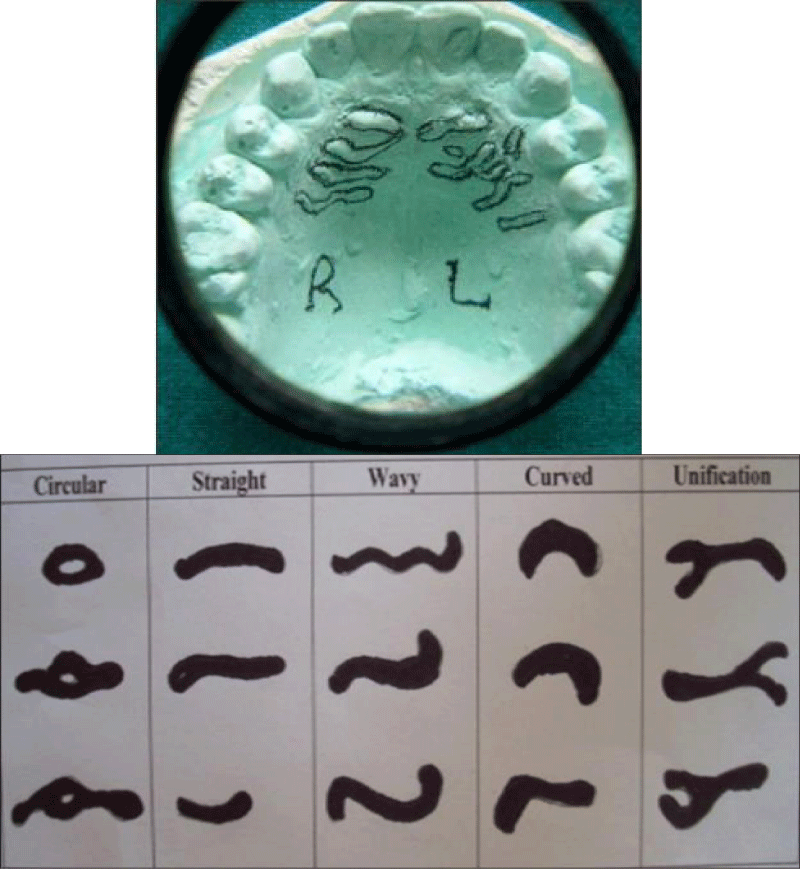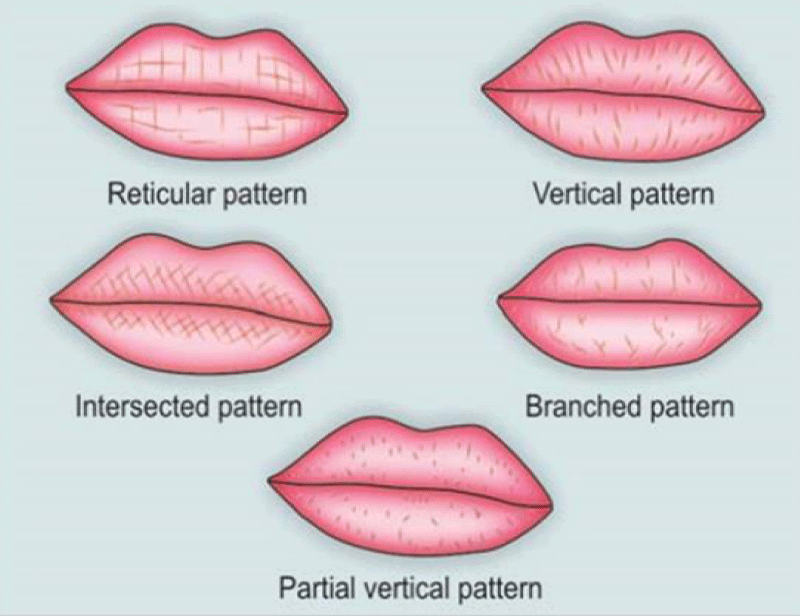More Information
Submitted: April 10, 2025 | Approved: April 22, 2025 | Published: April 23, 2025
How to cite this article: Mahesh P. Forensic Science in Pediatric Dentistry: Collect Preserve & Analyse: A Review. J Forensic Sci Res. 2025; 9(1): 037-040. Available from:
https://dx.doi.org/10.29328/journal.jfsr.1001078
DOI: 10.29328/journal.jfsr.1001078
Copyright License: © 2025 Mahesh P. This is an open access article distributed under the Creative Commons Attribution License, which permits unrestricted use, distribution, and reproduction in any medium, provided the original work is properly cited.
Forensic Science in Pediatric Dentistry: Collect Preserve & Analyse: A Review
Pallavi Mahesh*
Reader, Deparment of Pedodontics & Preventive Dentistry, Rajiv Gandhi University of Health Sciences, India
*Address for Correspondence: Pallavi Mahesh, Reader, Deparment of Pedodontics & Preventive Dentistry, Rajiv Gandhi University of Health Sciences, India, Email: [email protected]
Dentistry has much to offer in the detection and solution of crime or civil proceedings. Forensic dentistry requires an interdisciplinary knowledge of dental science, and it is the role of the Forensic Odontologist to establish a person's identity. Teeth, with their physiologic variations, pathosis record information that remains throughout life and beyond. Forensic Odontology has an important role in the recognition of abuse among children. Teeth may also be used as a weapon against children, and physical evidence such as DNA, bite marks, fingerprints may objectively link suspects to a crime and develop important investigative leads. Gender identification and sex determination by analyzing the pulp tissue in primary teeth can be regarded as an effective tool in providing valuable forensic information. The rights of children and their aspirations are of paramount importance, and the Pediatric dentist can contribute immensely to the field of Forensic Odontology in providing justice to these unfortunate children.
This new era has brought many good things into our lives such as the boom in telecommunication and information technology. It’s an artificial intelligence world, but it has also brought new challenges in life, which are: an increased terrorism, natural calamities, disasters, and a very high crime rate. Teeth are extremely resistant to environmental insults even after death, and remain after an extended period of burial [1]. Forensic Science is very important for human identification and dental profiling, to maintain dental records, for bite mark analysis, to estimate age, race and sex of an individual and in the field of forensic anthropology and much of its expertise is based on clinical experience, basic research and breakthrough advances concerning dentistry [2].
Identification
Pediatric Dentist has an important role in identifying unknown human remains, especially of a child, and child identification in mass disasters, and also in cases of child abuse and neglect. Inferring the lifestyle and dietary habits from skeletal remains of a children at forensic and archaeological sites. It’s important to assess the sex of the child based on skeletal remains, and also in the identification and analysis of bite marks at crime scenes, especially in cases of child abuse. Through forensic dentistry, dentists can play a small but significant role in identifying the victims of crime and disaster through guidelines and standards. A dentist can assist those involved in a crime investigation [3]. Dental identification procedure involves Comparative identification and Reconstructive identification.
Comparative identification involves comparing the child’s dental remains with presumed dental records of the individual, which involves oral autopsy, obtaining dental records, comparing postmortem and antemortem dental data, and finally writing the report and drawing the conclusion.
Reconstructive identification involves eliciting the ethnicity or “race”, gender, age, and occupation of the dead individual child, undertaken when virtually no clue exists. There may be a mandibular fragment bearing teeth or, at worst, a small fragment of a single tooth no more than a few millimeters in size [4].
Forensic odontology has played a crucial role in certain real-life incidents in which victims were identified in mass disasters like the 2004 Tsunami in India, where dental records were used to match remains with individuals.
Delhi gang rape case
A forensic odontologist played a crucial role in this case by comparing the bite marks on the victim with the dentition of the accused, leading to the conviction of two individuals (Figure 1).
Figure 1:
Oral autopsy
Also known as necropsy or post-mortem. It has a systematic protocol starting with critical examination of the external features of the child's body, such as gender, ethnicity, build, wounds, scars, tattoos, and body piercing. Photographs; radiographs; fingerprints, finger nail scraping, and hair sample may be obtained from the child's body according to the requirements. Radiographs of the jaws will show the extent of mineralization with each individual tooth type. This enables estimation of age at death to be determined to within a few months in infants and to within a few years in teenage specimens [5].
Species, Sex and race determination
Teeth are a very good source of DNA as they can resist extreme conditions. PCR allows amplification of even highly degraded DNA. Species determination is generally straightforward, unless only patchy evidence is found at the scene of a crime. The traditional method of procedure has been to examine the fragmented tooth or bone, using comparative dental anatomy to determine the species of origin. If this is not possible from the shape of the fragment, the enamel may be examined with light or electron microscopy since the arrangement of enamel rods or prisms differs, for example, between primate and non-primate tissue [6].
Age determination at death
Radiographs of the jaws will always indicate the extent of mineralization with each individual tooth type, which enables the age at death to be determined within a few months in infants and to within a few years in teenage specimens [7]. Age assessment can be very accurate due to various events taking place, such as primary tooth germ formation, deciduous teeth enamel formation completion, and permanent first molar formation. The neonatal line serves as an indicator of live birth. The presence of a neonatal line indicates a live birth. However, false results can be obtained as it takes around 3 weeks after birth to form. It has legal implications in feticide and infanticide. In children and adolescents, tooth eruption and tooth calcification, these events are important in age estimation (Table 1).
| Table 1: | |||
| Methods of age estimation by teeth | |||
| Prenatal/neonatal/early post-natal | Age estimation in children and adolescents | Age estimation in adults | Biochemical indicators |
| Histologic techniques; Neonatal line; Dry weight; Measurement | Tooth emergence; Tooth calcification; Modified Demirjian’s method | Gustafson’s method; Johnson’s modified formula; Root transparency; Third molar formation; Cementum annulations | Aspartic acid racemization; Radioactive carbon 14 estimation |
Palatal rugae in identification
Useful in Pediatric victims, Rugae patterns, like teeth, are considered unique to each child. Age estimation in prenatal, neonatal, and early post-natal child is done by use of histological techniques (12 weeks before it is actually apparent on radiographs), by radiograph methods, and neonatal line indicates a live birth. It may be of extreme importance medico-legal cases by dry weight of mineralized tooth (at six-month IU – 60 mg, newborn-0.5 g, six months post-natal-1.8 g). This method is known as palatal Rugoscopy, which is an important parameter as rugae do not undergo significant changes except in length. They resist decomposition and remain in the same position throughout the entire life of a person, and they reappear after trauma or surgery [8] (Figure 2).
Figure 2:
Crime investigation and bite mark analysis
Forensic odontologist has an important role in crime investigation. Preservation of dental records and proper storage of shreds of evidence for further investigations should be done. Crime investigation includes bite marks and child abuse [9]. Bite marks accurately depict the unique pattern of the biter’s teeth. Bite marks are often associated with violent fights, child abuse, sex crimes, or sporting events. They can be collected at the scene of the crime. Human bite mark is broad, U-shaped, somewhat circular or oval. Animal bite mark is narrow anteriorly, V-shaped, elongated, and the morphology is also different.
Dental record for bite mark includes photography, impression, models, and saliva swab collection [10]. Photographs should be taken first, as it does not affect any other recording, such as impressions and taking swabs [10]. Two types of photographs are to be taken, orientation and a close‑up view. Photographs must be taken daily for 3 days for various documentation. A polyvinyl siloxane impression should be taken for the bite mark immediately after swabbing it.
The intercanine distance method is very important for recognition of a child’s dentition when compared to an adult dentition as the distances <30 mm belong to a child and a distances above that to an adult [11].
Other methods are the odontometric triangle method, and the comparison technique can also be used. Direct comparison can be carried out by placing the suspect’s model on the bite mark. In indirect method, the suspect’s model is traced onto clear acetate and compared with photographs [10] (Figure 3).
Figure 3:
Lip prints
The study of lip prints is termed “Cheiloscopy.” Lip prints are said to be permanent and unchangeable. Identification of the pattern is possible from the 6th week of intrauterine life. These can serve as important evidence left at the crime scene. Grooves on the lips, known as sulci labiorum rubrorum, are visible on lips. These grooves are heritable and supposed to be individualistic. Hence, material evidence left at a crime scene is similar to fingerprints.
Disadvantages are trauma to the lips, resulting in scarring. Surgical treatment will also affect the size and shape of the lips (Figure 4).
Figure 4:
Role of pedodontist
A pediatric dentist can help the legal officers in investigations by recognizing signs and symptoms of child abuse and identifying such victims. The pedodontist can provide valuable information to physicians about the oral and dental aspects of child abuse and also helps in bite mark analysis. Dental records, photographs with all the information should be maintained by the dentist.
Pediatric Dentists are trained to handle children and are often the first point of contact for families. They can:
1) Recognize signs of abuse: Be aware of potential signs of abuse and neglect in children, such as injuries, delayed development, or behavioral changes.
2) Document and preserve evidence: Properly document and preserve dental evidence, such as bite marks or dental records, for forensic analysis.
3) Collaborate with forensic odontologists: Work with forensic odontologists to provide expert opinions and support investigations.
4) Educate the public: Raise awareness about forensic odontology and its importance in identifying victims and finding perpetrators of abuse and violence.
Forensic odontology in pediatric dentistry thus plays a crucial role in ensuring justice for children, particularly in cases of abuse and neglect. Pediatric dentists, with their specialized knowledge and training, are well-equipped to contribute to these investigations and legal proceedings.
Despite cultural advancement, instances of unnatural deaths persist. Every citizen should help the noble cause of the defense of the “innocent and punishment of the guilty”. Major dental clues, once upon a time neglected, are now increasingly used to solve crime. Hence, it is a professional responsibility of the pediatric dentist to assist in problems involving medico-legal identification of the unknown body. Dental evidence plays an important role in establishing the identity of the dead. The realm of Forensic Odontology can represent the most challenging and rewarding aspect in the field of pediatric forensic dentistry.
Ethical considerations
As this article is a narrative review, ethical clearance was not required.
- Phillips M. The role of forensic dentistry in South Africa. Med Law. 1993;12(6-8):487-91. Available from: https://pubmed.ncbi.nlm.nih.gov/8183057/
- Syrjanen SM, Sainio. Forensic dentistry—recent development towards an independent discipline in modern dentistry. Proc Finn Dent Soc. 1990;86(3-4):157-70. Available from: https://pubmed.ncbi.nlm.nih.gov/2094849/
- Dinesh KT. Journal of Oral and Maxillofacial Pathology. 2017;8(2):136-8.
- Ganswindt M, Ehrlich E, Klostermann P, Troike WG, Schneider V. Bone finds: a challenge to forensic science. J Leg Med. 2003;(1):382-5. Available from: https://doi.org/10.1016/s1344-6223(02)00137-2
- Whittake DK, Llewelyn DR, Jones RW. Sex determination from necrotic pulpal tissue. Br Dent J. 1975 Nov 18;139:403-5. Available from: https://doi.org/10.1038/sj.bdj.4803645
- Davis EC, Ireland EJ, Carr R. Implementations of forensic dentistry in criminal investigations. Eur Sci J. 2014;10:196-9. Available from: https://doi.org/10.19044/esj.2014.v10n24p%25p
- Monika B, Ann-KZ, Jochen H, Katja P. Forensic dental age estimation: development of new algorithm based on the minimal necessary databases. J Pers Med. 2022;12:1280. Available from: https://doi.org/10.3390/jpm12081280
- Atreja G. Cheiloscopy and palatoscopy. In: Textbook of Forensic Odontology. India: Jaypee Brothers Medical Publishers; 2013;155-68. Available from: https://www.jaypeedigital.com/book/9789350257227/chapter/ch7
- Vinutha YJ, Krishnapriya V, Shilpa G, Vasanti D. Forensic dentistry: a pedodontist’s perspective. J Med Radiol Pathol Surg. 2015;(1):8-14. Available from: http://dx.doi.org/10.15713/ins.jmrps.9
- Sharma G, Yadav D, Singh H, Aggarwal AD, Sandhu R. Bite mark analysis: an important tool in crime investigation. J Indian Acad Forensic Med. 2006;28:69-91. Available from: http://dx.doi.org/10.1177/0971097320060209
- Stavrianos C, Tatsis D, Stavrianou P, Karamouzi A, Mihail G. Intercanine distance as a recognition method of bite marks induced at cases of child abuse. Res J Biol Sci. 2011;6:25-9. Available from: http://dx.doi.org/10.3923/rjbsci.2011.25.29



